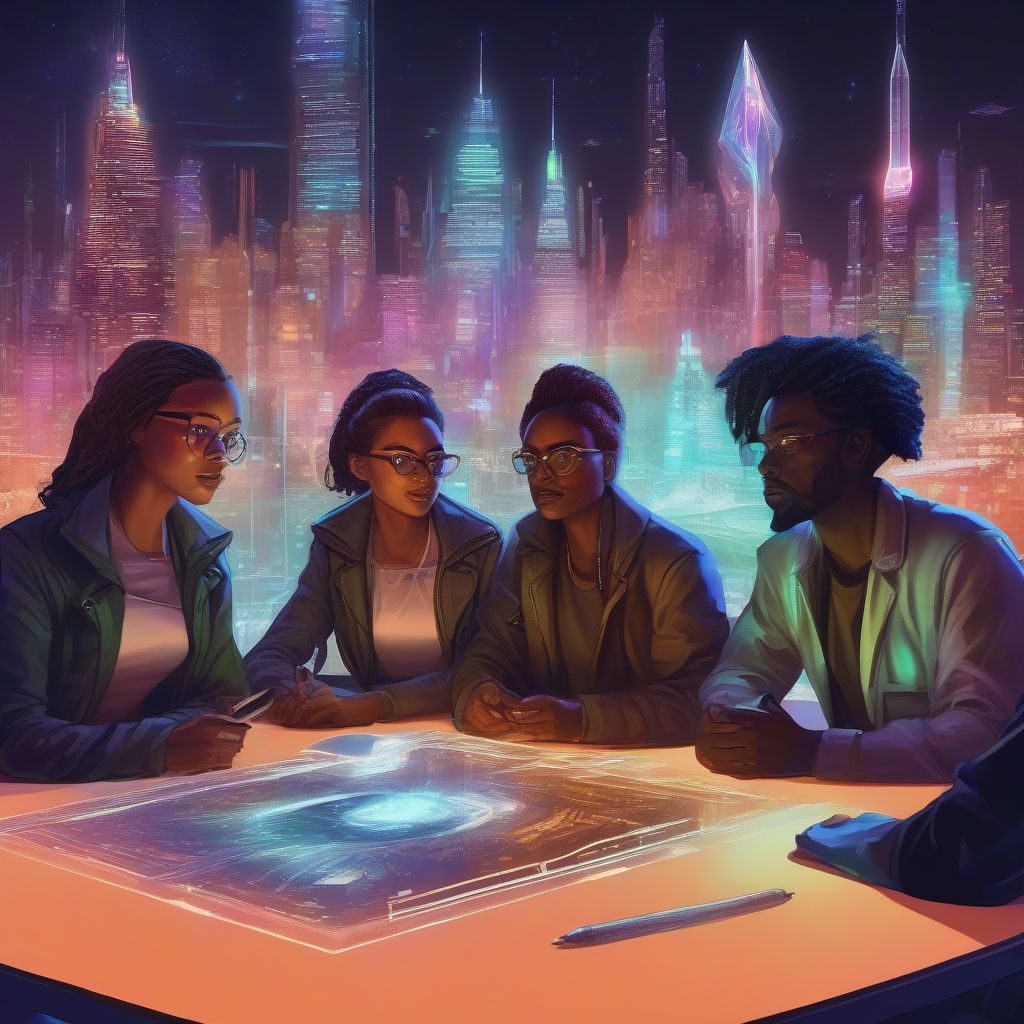Imagine a vast, intricate universe, teeming with alien life and ruled by advanced technology. Now, imagine that universe springing from the mind of not just one author, but a team of creative minds working together. This is the reality behind some of the most captivating science fiction works, where collaboration becomes the secret ingredient that elevates stories from good to truly phenomenal.
Beyond the Lone Genius: Why Collaboration Matters in Science Fiction
The stereotype of the solitary author, toiling away in isolation, might hold true for some, but in the world of science fiction, collaboration often takes center stage. This is a genre that thrives on pushing boundaries, exploring the unknown, and building intricate worlds – tasks that can benefit immensely from the synergy of multiple perspectives.
Expanding Creative Horizons: The Alchemy of Shared Ideas
When authors collaborate on a science fiction project, they bring their unique strengths, experiences, and imaginations to the table. This melting pot of ideas can lead to:
- More Diverse Characters and Cultures: Multiple authors can offer a broader range of perspectives, resulting in richer, more authentic portrayals of alien societies, future cultures, and marginalized communities.
- Multi-layered Plots and Twists: Collaboration allows for intricate plot weaving, unexpected twists, and the exploration of multiple viewpoints within a story. Think of it like a tapestry woven from different threads, creating a more complex and compelling final product.
- Detailed World-Building: Science fiction is all about immersive world-building, and a team of authors can collectively flesh out the scientific, social, political, and technological aspects of a fictional universe with greater depth and realism.
Navigating the Challenges: When Collaboration Becomes a Catalyst
Collaboration isn’t always a smooth journey; it requires communication, compromise, and a shared vision. However, overcoming these challenges can lead to:
- Elevated Storytelling: The process of bouncing ideas off each other, debating plot points, and refining characters through multiple lenses often results in a tighter, more polished narrative.
- Shared Success and Support: Collaborative projects foster a sense of community and shared ownership among authors. This can be invaluable, especially in the often solitary world of writing.
 Collaboration in Science Fiction
Collaboration in Science Fiction
From Page to Screen: Collaboration in Sci-Fi Adaptations
The collaborative spirit of science fiction extends beyond the written word. The journey from a book to a film or TV series requires the combined talents of screenwriters, directors, designers, visual effects artists, and countless others. This collaborative effort is crucial for:
- Translating Vision: Adapting a complex science fiction world for the screen demands a shared understanding and interpretation of the source material.
- Visual Spectacle and Immersion: Bringing alien landscapes, futuristic technology, and fantastical creatures to life relies heavily on the expertise of visual artists and technicians working in sync.
[amazon bestseller=”science fiction collaborations”]
Conclusion: Embracing the Collective Imagination
Collaboration, in its many forms, isn’t just a method of work in science fiction; it’s an integral part of the genre’s DNA. It allows authors, artists, and creators to pool their talents, challenge each other’s ideas, and ultimately, craft stories that are more than the sum of their parts. So, the next time you lose yourself in a richly imagined science fiction world, take a moment to appreciate the power of collaboration that made it possible.
What are your favorite examples of collaboration in science fiction? Share your thoughts in the comments below!
